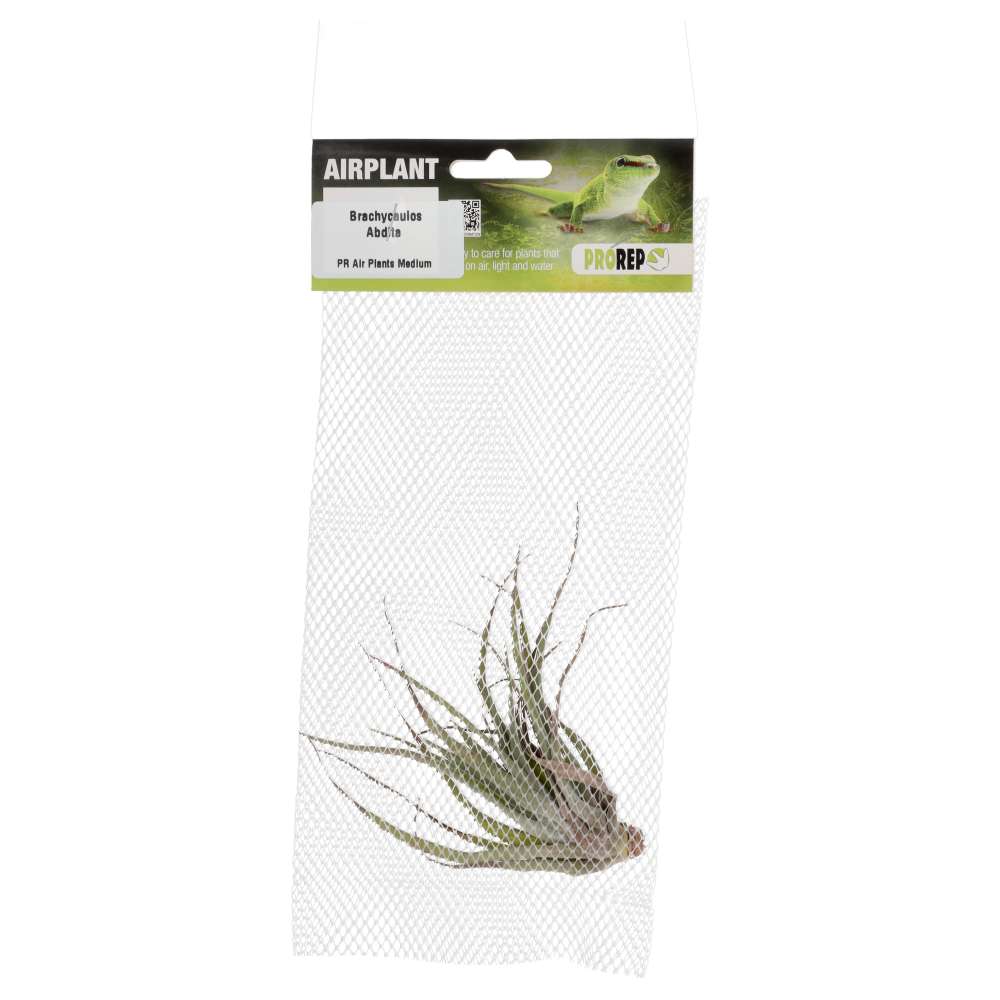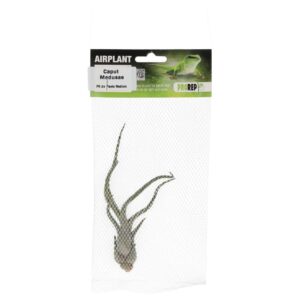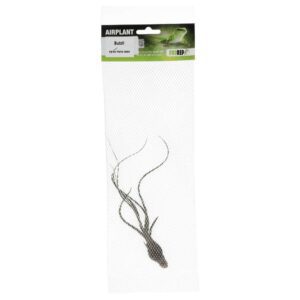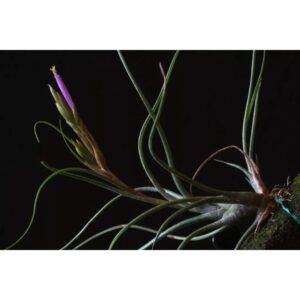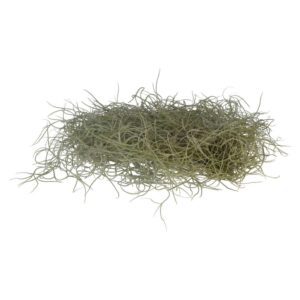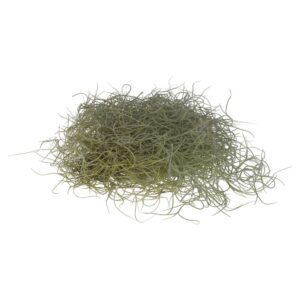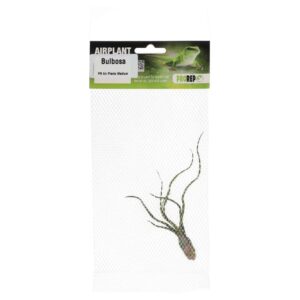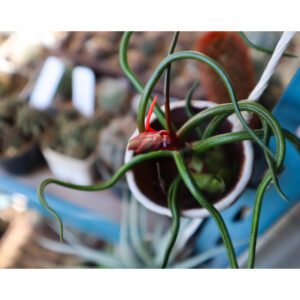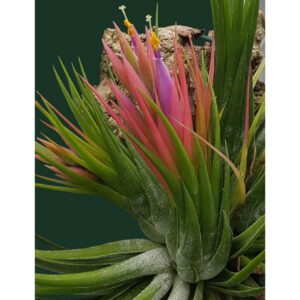Brachycaulos abdita
Mature Appearance:
Similar size (6–9 cm rosette).
Under bright light, leaves deepen to rich magenta/red hues, especially near the centre.
When not in bloom, outer leaves remain pale green, while inner leaves show pink flush.
Life Cycle:
Bloom: Sent up a 10 cm spike with rose‐pink inflorescences.
Pups: After flowering, 4–6 pups emerge; pups start green and take on pink tints as they mature.
Mother Decline: As pups reach 5 cm, the mother’s leaves shrivel; pups form a ring that hides the spent mother.
Enclosure Use:
Best Fit: Display in mid‐canopy or at eye level in reptile vivaria for colour contrast (e.g., along a background panel).
Suitable for arboreal gecko or tree‐frog setups where colour enhances visual appeal.
The bright pink tones help stimulate animal activity and enrich enclosure aesthetics.
Care:
Light: Bright indirect (300–500 µmol·m⁻²·s⁻¹). Some morning sun is okay.
Water: Mist 2–3×/week; soak 15 min weekly.
Airflow: Good circulation to dry after watering.
Temps: 18–28 °C; avoid sustained <16 °C.
Overview of Enclosure Placement & Compatibility
Arboreal Reptiles (Geckos, Tree Snakes, Chameleons): Mount mid‐ to upper‐level on cork bark or natural branches—air plants stay dry at leaf tips and provide perches.
Paludariums (Dart Frogs, Newts): Position so bases are above standing water but within mist zones; high humidity helps their growth and stability.
Terrestrial Reptiles (Small Tortoises, Skinks): Generally, avoid placing air plants on floor substrate where they stay too wet. Instead, mount on vertical surfaces.
Nocturnal Reptiles (Crepuscular Geckos, Tree Frogs): Many Tillandsias thrive in lower‐light understory conditions—select varieties like Ionantha scaposa or Brachycaulos multiflora that tolerate moderate light.
Basic Care Tips for All Tillandsias in Reptile Enclosures
Light: Most need bright, indirect light; avoid full midday sun inside a glass vivarium to prevent heat buildup.
Watering:
Misting: Use a fine‐mist sprayer; wet entire plant until beads form on leaves.
Soaking: Remove and soak in dechlorinated, room‐temperature water. For large species (e.g., T. fasciculata), soak 20–30 minutes; smaller ones 10–15 minutes.
Frequency: In a high‐humidity vivarium (≥70% RH), misting 2×/week may suffice. In drier rooms, mist 3–4 times weekly with a weekly soak.
Airflow: Ensure leaves dry within 4–6 hours to prevent rot. Use vent fans or leave enclosure slightly ajar after misting.
Temperature: Most thrive between 18–28 °C. Avoid prolonged humidity with temperatures >30 °C, which can lead to fungal issues.
Fertilizer: Optional: use a bromeliad or tillandsia‐specific foliar fertilizer at ¼ strength once a month during active growth. Rinse thoroughly after to prevent residue.
Mounting & Display:
Attach using fishing line, thin wire, or high‐temp silicone to cork bark, rock, or driftwood. Do not use glue that can leach toxins.
Position so water does not pool in leaf rosettes—provide an angle or slight tilt to assist drainage.
By integrating these air plant species into your reptile vivaria, you create a more natural, three‐dimensional environment—offering climbing surfaces, humidity buffering, and visual interest—while providing minimal maintenance needs. Proper placement, regular but moderate watering, and good airflow will ensure your Tillandsias thrive alongside your reptiles.

PR Airplant Medium brachycaulos abdita
SKU: PPA025
PR Airplant Medium brachycaulos abdita
£5.49
Air plants provide long lasting natural decor for terrariums and can be attached to vines, stones, trunks, in fact almost anything for a naturalistic finish.
Only 2 items left in stock!
Additional information
| Brand | ProRep |
|---|

